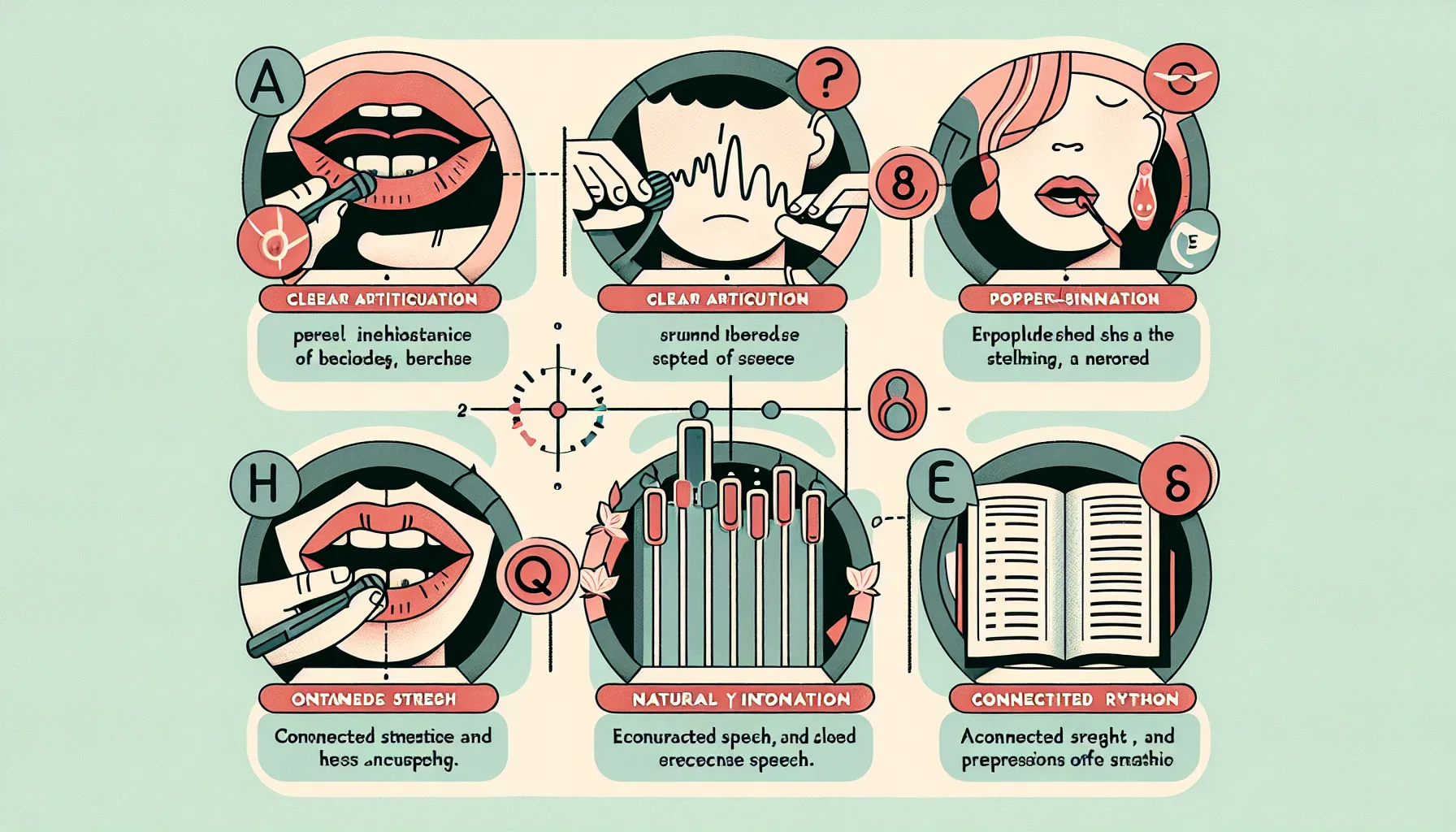Understanding the Importance of Pronunciation in IELTS Speaking
Pronunciation plays a crucial role in achieving a high band score in the IELTS Speaking test. Examiners assess your ability to produce clear, natural-sounding English with appropriate intonation and stress patterns. To reach band 8, you need to demonstrate a wide range of pronunciation features with only occasional lapses.
Key Pronunciation Features for Band 8
- Clear articulation of individual sounds
- Proper word stress and sentence stress
- Natural intonation patterns
- Effective use of connected speech
- Appropriate rhythm and pacing

Mastering Individual Sounds
To improve your pronunciation of individual sounds, focus on the following areas:
Vowel Sounds
English has a rich variety of vowel sounds, including some that may not exist in your native language. Practice these challenging vowel sounds:
- /æ/ as in “cat” vs. /e/ as in “bet”
- /ɪ/ as in “sit” vs. /i:/ as in “seat”
- /ʊ/ as in “put” vs. /u:/ as in “boot”
- /ə/ (schwa) as in “about”
Consonant Sounds
Pay attention to consonant sounds that may be difficult for speakers of your language:
- /θ/ and /ð/ (th sounds) as in “think” and “this”
- /v/ vs. /w/ as in “vest” and “west”
- /r/ vs. /l/ as in “rice” and “lice”
- Final consonant clusters, e.g., “sixths,” “strengths”
Perfecting Word and Sentence Stress
Proper stress is essential for clear communication and natural-sounding speech.
Word Stress
In English, multisyllabic words have one syllable that receives primary stress. Misplacing this stress can lead to misunderstandings. Practice these patterns:
- Two-syllable nouns: stress on the first syllable (e.g., TAble, APple)
- Two-syllable verbs: stress on the second syllable (e.g., preSENT, deCIDE)
- Words with suffixes: stress shifts (e.g., PHOtograph, phoTOgraphy)
Sentence Stress
In sentences, stress content words (nouns, main verbs, adjectives, adverbs) and de-emphasize function words (articles, prepositions, pronouns). This creates the natural rhythm of English speech.
Example: “The CAT is on the MAT” (stressed words in capitals)
Developing Natural Intonation
Intonation conveys meaning and attitude in English. To improve your intonation:
- Use rising intonation for yes/no questions
- Use falling intonation for wh-questions and statements
- Practice tag questions with appropriate rising or falling intonation
- Use intonation to express emotions and attitudes
Mastering Connected Speech
Connected speech features make your English sound more natural and fluent. Focus on:
- Linking: connecting words that end and begin with vowels (e.g., “go_out”)
- Elision: omitting sounds in rapid speech (e.g., “las(t) night”)
- Assimilation: changing sounds to blend with neighboring sounds (e.g., “good boy” becomes “goo[b] boy”)
- Weak forms: using reduced pronunciations of function words (e.g., “for” as /fə/ instead of /fɔːr/)
Improving Rhythm and Pacing
English is a stress-timed language, meaning the time between stressed syllables is roughly equal. To improve your rhythm:
- Practice speaking in thought groups, pausing naturally between ideas
- Use contractions in informal speech (e.g., “I’m” instead of “I am”)
- Vary your speed, slowing down for important information and speeding up for less crucial details
- Use fillers and hesitation devices appropriately (e.g., “um,” “well,” “you know”)
Practical Tips for Pronunciation Improvement
- Listen actively to native speakers and try to imitate their pronunciation
- Record yourself speaking and compare it to native speaker recordings
- Use pronunciation apps and websites for targeted practice
- Work with a pronunciation coach or language exchange partner
- Practice tongue twisters to improve articulation
- Read aloud regularly, focusing on stress and intonation
Common Pronunciation Pitfalls to Avoid
- Overemphasizing every word, which can sound unnatural
- Neglecting word endings, especially final consonants
- Using the wrong word stress, particularly in longer words
- Speaking with a flat intonation, which can sound monotonous
- Failing to link words in connected speech
- Pronouncing silent letters (e.g., the “b” in “doubt”)
Next Steps: Putting It All Together
To achieve band 8 in IELTS Speaking pronunciation:
- Assess your current pronunciation skills and identify areas for improvement
- Create a personalized practice plan focusing on your weak points
- Dedicate time each day to pronunciation exercises
- Seek feedback from native speakers or qualified teachers
- Incorporate pronunciation practice into your overall IELTS preparation routine
- Take mock IELTS Speaking tests to gauge your progress
Remember, achieving excellent pronunciation is a gradual process that requires consistent practice and patience. By focusing on these key areas and implementing the tips provided, you’ll be well on your way to mastering the pronunciation skills necessary for a band 8 score in IELTS Speaking.